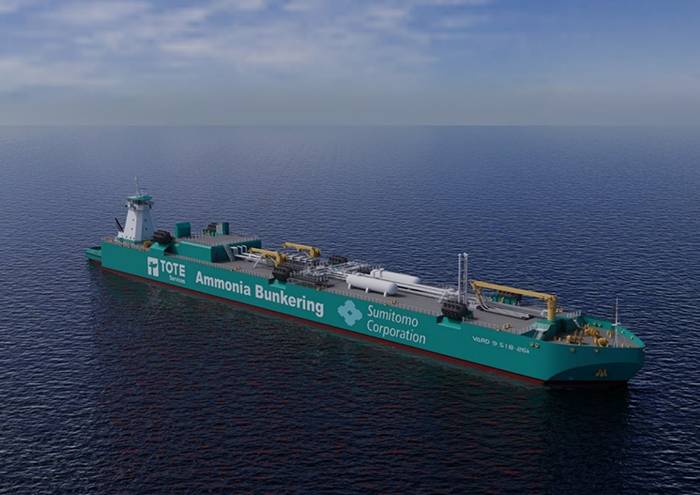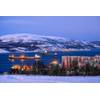ABS Approves US' First Ammonia Bunker Barge
The initial design for a new ammonia bunkering articulated tug-barge (ATB) has been granted approval in principle (AIP) from classification society the American Bureau of Shipping (ABS).
The partners behind the project, including ABS, A.P. Moller – Maersk A/S, Fleet Management Limited, Georgia Ports Authority, Maersk Mc-Kinney Moller Center for Zero Carbon Shipping (MMMCZCS), Sumitomo Corporation and TOTE Services, came together in March 2023 and have been conducting a feasibility study on ship-to-ship bunkering of reduced emission ammonia along the U.S. East Coast.

The AB-ATB barge design and engineering were completed by VARD Marine US, Inc. (VARD) to be compatible with vehicle carriers including Aurora Class pure car and truck carriers (PCTC) recently delivered to Norwegian shipping company Höegh Autoliners, for bunkering operation at the ports of Jacksonville, Fla., and Brunswick, Ga. as well as a 15,000 TEU ammonia-fuelled containerships whose concept design was created by MMMCZCS, for bunkering operation at the port of Savannah, Ga.
The partners are targeting commercial operations by 2030 as ammonia—which does not emit CO2 when used as a fuel—continues to gain interest across the maritime industry in line with the International Maritime Organization (IMO)’s strategy to reduce greenhouse gas (GHG) emissions from international shipping by at least 20% by 2030 compared to 2008 levels, and to reach net-zero emissions on a life-cycle basis by 2050. Green ammonia produced with renewable energy results in zero well-to-wake greenhouse gas emissions.
The world's first use of ammonia as marine fuel was conducted at port of Singapore, the world's largest bunkering hub, earlier this year.
The U.S. market has the potential to become the world’s largest producer of clean ammonia. According to Bloomberg NEF projections, the U.S. is expected to account for 41% of the global supply of reduced emission ammonia by 2030.
“This is an exciting milestone for our feasibility study and project teammates. Having an approved basic design for the AB-ATB is another step toward maturity for ammonia as a marine fuel. ABS is committed to supporting the maritime industry as it pursues low-carbon, more sustainable operations,” said Panos Koutsourakis, ABS Vice President, Global Sustainability, as a representative of the consortium.
Related News
Charred Remains of Solong Towed to Scottish Port
